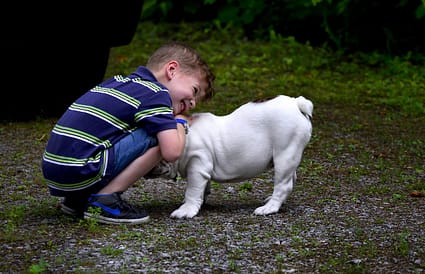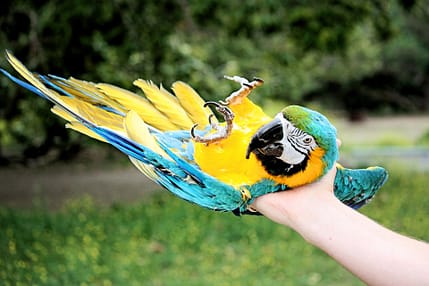“Interacting with Stray Pets with Proper Training”
Table of Contents:
-
Introduction
-
Health Risks
-
Aggression or Fear
-
Injury or Disease Transmission
-
Lack of Vaccination and Medical Care
-
Legal and Ethical Considerations
-
Observe from a Distance
-
Do not Corner the Animal
-
Contact Animal Control or a Rescue Organization
-
Interacting with Stray Pets with Proper Training
-
Prioritize Personal Safety
Introduction:
While Interacting with stray pets can be risky and should be approached with caution. Stray pets are a vulnerable part of our community, often facing numerous challenges due to lack of care and shelter. In this article, we delve into the significance of lending a helping hand to these furry friends who deserve a loving and secure environment. We will also Discover the complexities of approaching and interacting with stray pets. Learn about potential health risks, the significance of observing from a distance, the role of professionals in ensuring the well-being of these vulnerable animals, and interaction with stray pets. While many stray pets might appear friendly and approachable, there are potential health and safety concerns to consider:
-
Health Risks:
Stray animals may carry various diseases, parasites, and infections that can be transmitted to humans through direct contact. Rabies, fleas, ticks, and other parasites are risks to consider when touching a stray animal. It’s important to remember that not all diseases are visibly apparent.
One of the primary concerns, when we touch stray pets or animals, is the potential for transmitting diseases. Stray pets might not receive regular veterinary care, making them more susceptible to infections.
-
Aggression or Fear:
Stray animals might have had negative experiences with humans, making them fearful or potentially aggressive. Approaching them without proper caution could result in bites or scratches.
Stray animals might feel threatened by unfamiliar human contact. A cornered or scared animal can react defensively, leading to bites. It’s crucial to recognize signs of distress in the animal’s body language and avoid any actions that could provoke aggression.
-
Injury or Disease Transmission:
Even if a stray pet seems friendly, there’s a possibility it could be injured or sick without showing immediate signs. Handling such an animal could lead to injury for both the animal and the person.
Zoonotic diseases are illnesses that can spread from animals to humans. Coming into contact with a stray pet could expose you to such diseases, emphasizing the importance of cautious interaction. Maintaining good hygiene and using protective measures can help mitigate these risks.
-
Lack of Vaccinations and Medical Care:
Stray animals often lack proper medical care, including vaccinations. This increases the risk of disease transmission to humans and can also pose a threat to other pets.
-
Legal and Ethical Considerations:
In some areas, interacting with stray pets might be against the law, especially if they are feral or have no clear ownership. Some animal rescue organizations and animal control services have protocols for handling and rescuing stray animals.
The sight of a lonely stray pet can tug at our heartstrings. Their innocent faces and apparent need for affection make us want to connect with them. But before we touch stray pets, let’s take a closer look at their behavior and the potential consequences of our actions.
-
Observe from a Distance:
Assess the animal’s behavior and appearance from a safe distance. Note if it’s aggressive, injured, or seems approachable. Before attempting any interaction, take time to observe the animal from a distance. Assess their behavior and body language to gauge their comfort level and temperament.
Stray animals have had varied experiences with humans, which can influence their behavior. Some might approach humans with trust and curiosity, while others might exhibit fear or aggression due to past negative interactions. It’s essential to approach each animal with caution and respect for its boundaries.
-
Do Not Corner the Animal:
Avoid cornering the animal, as this might trigger fear or aggression. If you decide to interact with stray pets, do so gently and slowly. Avoid sudden movements or loud noises that might startle the animal.
-
Contact Animal Control or a Rescue Organization:
If you are concerned about the animal’s well-being, contact your local animal control or an animal rescue organization. They are trained to handle stray animals safely and appropriately. They have experience in handling stray pets and can provide guidance on how to assist without putting yourself or the animal at risk.
-
Interacting with Stray Pets with Proper Training:
If you have proper training in handling animals and necessary protective gear (like gloves), you may be able to assist under the guidance of professionals. While interacting with stray pets, it’s best to avoid direct physical contact, especially during initial encounters. Offer a closed hand for sniffing, allowing the animal to decide if they’re comfortable getting closer.
-
Prioritize Personal Safety:
Always prioritize your safety. Do not put yourself at risk by attempting to handle a stray animal without the necessary precautions. Experts recommend cautious yet compassionate interaction with stray animals. A veterinarian specializing in animal behavior, suggests, “Approach with patience, allowing the animal to make the first move. Respect their boundaries and prioritize their safety.”
Conclusion:
Remember that while your intentions might be good, ensuring your safety and the safety of the animal is paramount. It’s generally better to leave the handling of stray pets to trained professionals who can ensure their well-being and appropriate care.
Interacting with stray pets can be a rewarding experience, but it comes with responsibilities and potential risks. Prioritize safety, practice empathy, and consider alternative ways to help these animals beyond direct touch. By doing so, you can contribute positively to their lives while ensuring your well-being.






















